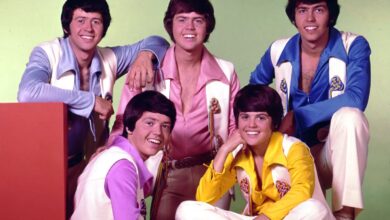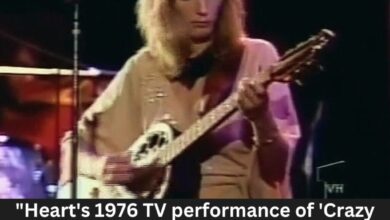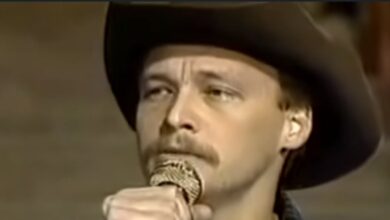Connie Francis’ “Where the Boys Are” and Its Timeless Reflection of Youthful Dreams in 1960
In 1960, Connie Francis released “Where the Boys Are,” a vibrant anthem that captured the spirit of teenage optimism and romantic yearning. As the title track for the film of the same name, the song quickly became a cultural touchstone. It reached the Billboard Hot 100, peaking at number four, and further established Francis as one of the most beloved pop icons of the era. With its lush orchestration and Francis’ expressive delivery, “Where the Boys Are” became more than just a movie theme — it embodied the aspirations of a generation on the brink of adulthood.
Born in Newark, New Jersey, Connie Francis rose to prominence during the late 1950s as one of America’s most versatile vocalists. Her distinct voice, capable of conveying both innocence and emotional depth, set her apart in the competitive world of pop music. After an early struggle to find her footing in the industry, Francis achieved her breakthrough with a heartfelt cover of “Who’s Sorry Now?” in 1958. From that moment on, she became a fixture on the charts, seamlessly transitioning between upbeat rock and roll numbers and sweeping ballads. By 1960, Francis had firmly established herself as a leading voice of the post-war generation.
The creation of “Where the Boys Are” was a product of collaboration between songwriter Neil Sedaka and lyricist Howard Greenfield, two rising stars of the iconic Brill Building scene. The duo, known for crafting memorable pop melodies, penned the song specifically for Francis, tailoring it to her signature style. Its dreamy, romantic lyrics perfectly captured the wide-eyed anticipation of young love, while the melody’s gentle crescendos gave Francis the space to showcase her vocal range. The song’s wistful tone resonated deeply with teenage audiences who saw themselves reflected in its hopeful narrative.
Recording “Where the Boys Are” took place at the renowned RCA Victor Studio in New York. Under the direction of producer Arnold Maxin, Francis delivered a performance that was both polished and emotionally resonant. The track’s orchestration, featuring lush strings and delicate percussion, enhanced its cinematic quality. Francis’ voice, simultaneously powerful and vulnerable, became the emotional core of the recording. Her ability to communicate longing and anticipation made the song an enduring classic.
Upon its release, “Where the Boys Are” received widespread acclaim. While it was not Francis’ highest-charting single, its connection to the popular film ensured its lasting visibility. The movie, a romantic coming-of-age story set during spring break in Fort Lauderdale, struck a chord with audiences and propelled the song into popular culture. Francis’ performance in the film, though limited to musical sequences, further cemented her association with the track. Together, the song and movie captured the carefree spirit of early 1960s youth.
Culturally, “Where the Boys Are” became a defining anthem of the era. It represented the romantic ideals and innocent optimism that characterized much of the post-war generation’s outlook. As the social landscape shifted in the years to come, the song remained a nostalgic reminder of simpler times. Its influence extended beyond the United States, with international audiences embracing its universal themes of love and longing.
For Connie Francis, the success of “Where the Boys Are” expanded her artistic opportunities. It solidified her status as a multimedia star, allowing her to pursue further roles in film and television. Despite the evolving music landscape of the 1960s, Francis maintained her popularity by recording in multiple languages and appealing to a global audience. The song also bolstered her reputation as a performer capable of capturing both the exuberance and heartbreak of youth.
In the years following its release, “Where the Boys Are” inspired numerous covers and reinterpretations. Artists across genres have paid homage to Francis’ original rendition, though few have matched its emotional sincerity. The song has also become a staple of nostalgic retrospectives, often featured in period dramas and documentaries celebrating the early 1960s. Its enduring appeal speaks to the timeless nature of its themes and the power of Francis’ performance.
While Connie Francis faced significant personal challenges in her life, including a devastating assault in the 1970s and subsequent battles with mental health, her resilience and dedication to her craft remained unwavering. Songs like “Where the Boys Are” continue to stand as a testament to her artistry and influence. In recognition of her contributions to music, Francis has received numerous accolades, including a star on the Hollywood Walk of Fame and induction into the Hit Parade Hall of Fame.
The legacy of “Where the Boys Are” is undeniable. Decades after its release, the song remains a cherished classic, evoking memories of sunlit beaches, innocent crushes, and the excitement of youthful possibility. It also serves as a reminder of Connie Francis’ remarkable talent and the enduring impact of her voice.
For listeners who grew up with the song, “Where the Boys Are” is a window to the past — a time of optimism and innocence. For younger generations, it serves as an introduction to a golden era of pop music, where heartfelt storytelling and melodic beauty reigned supreme. Through her iconic performance, Connie Francis ensured that this heartfelt ballad would forever remain a treasured piece of American music history.



